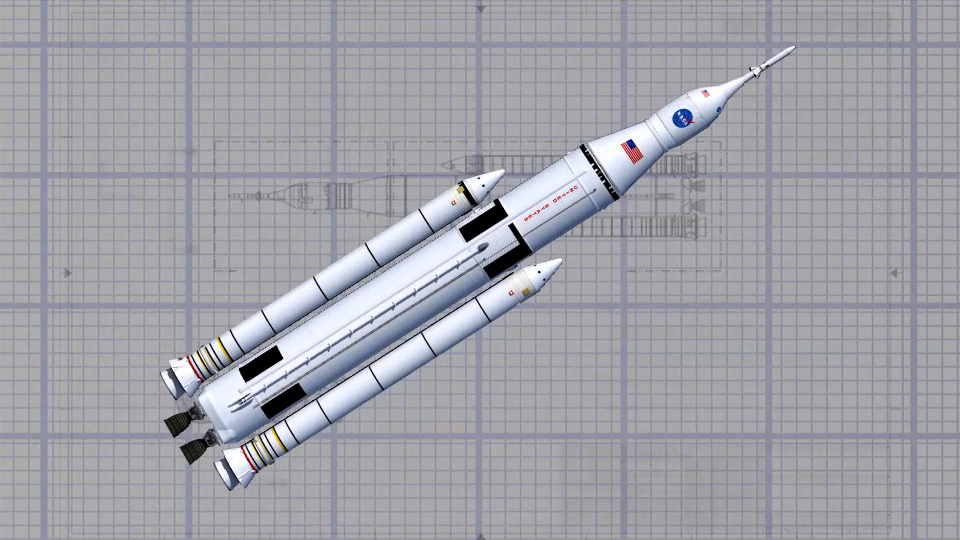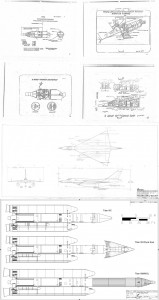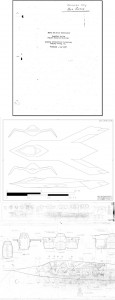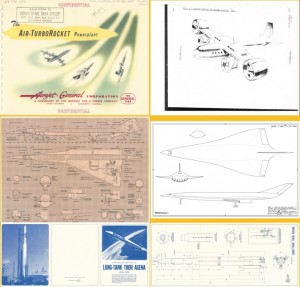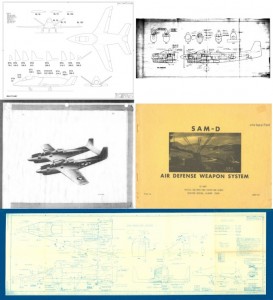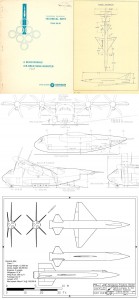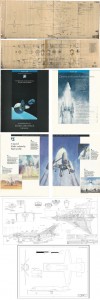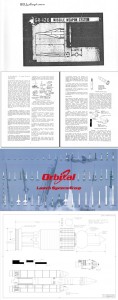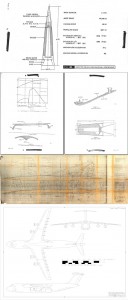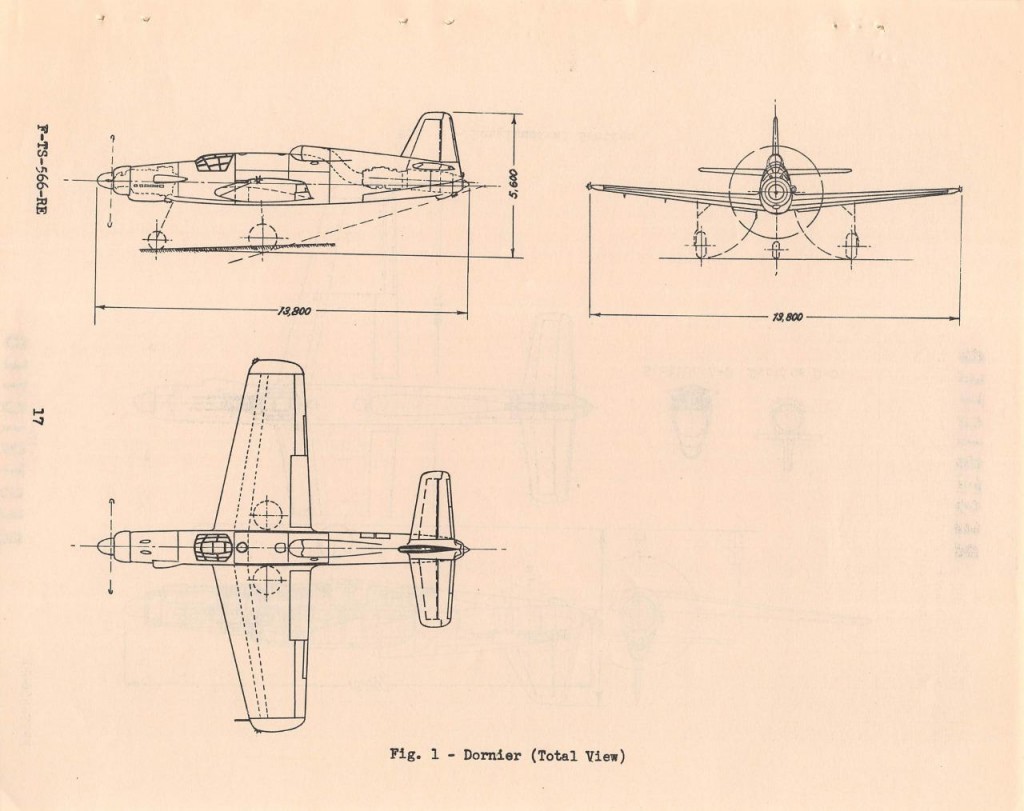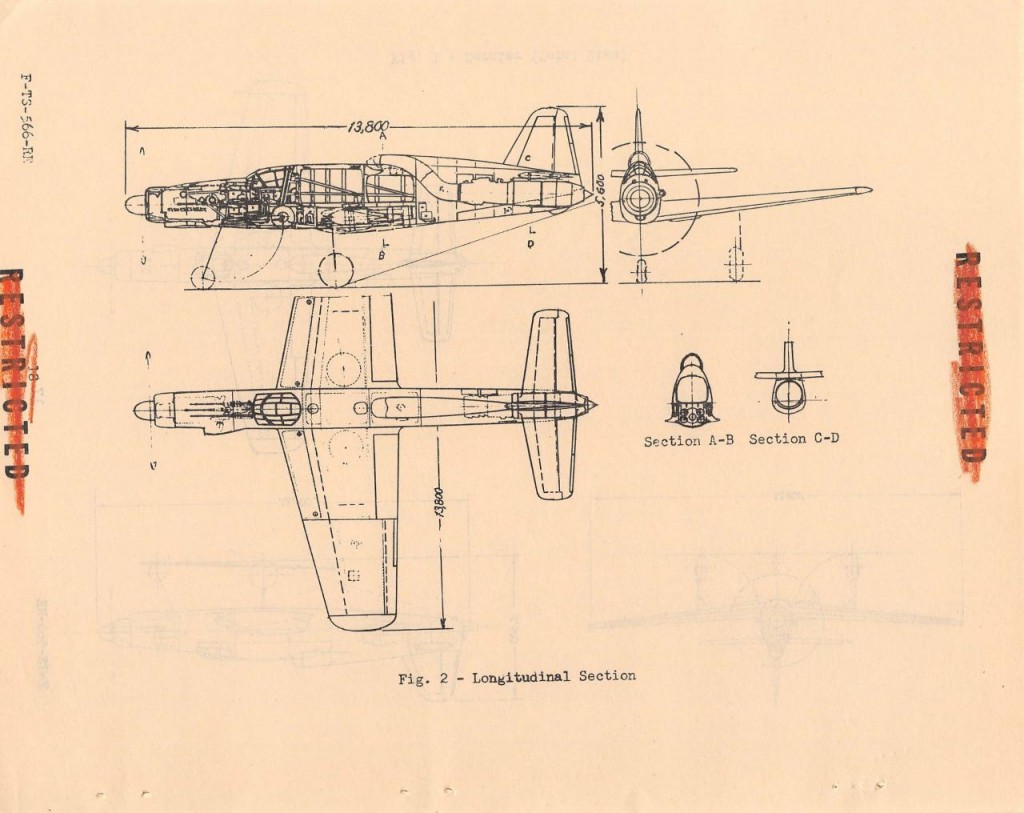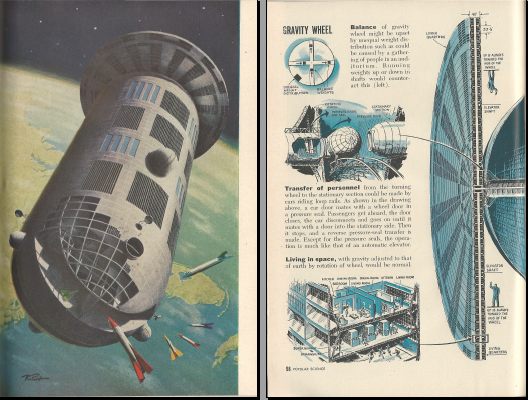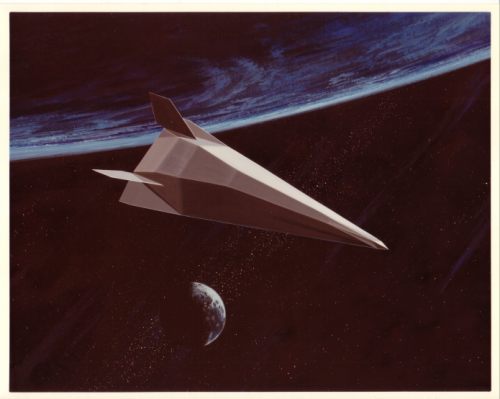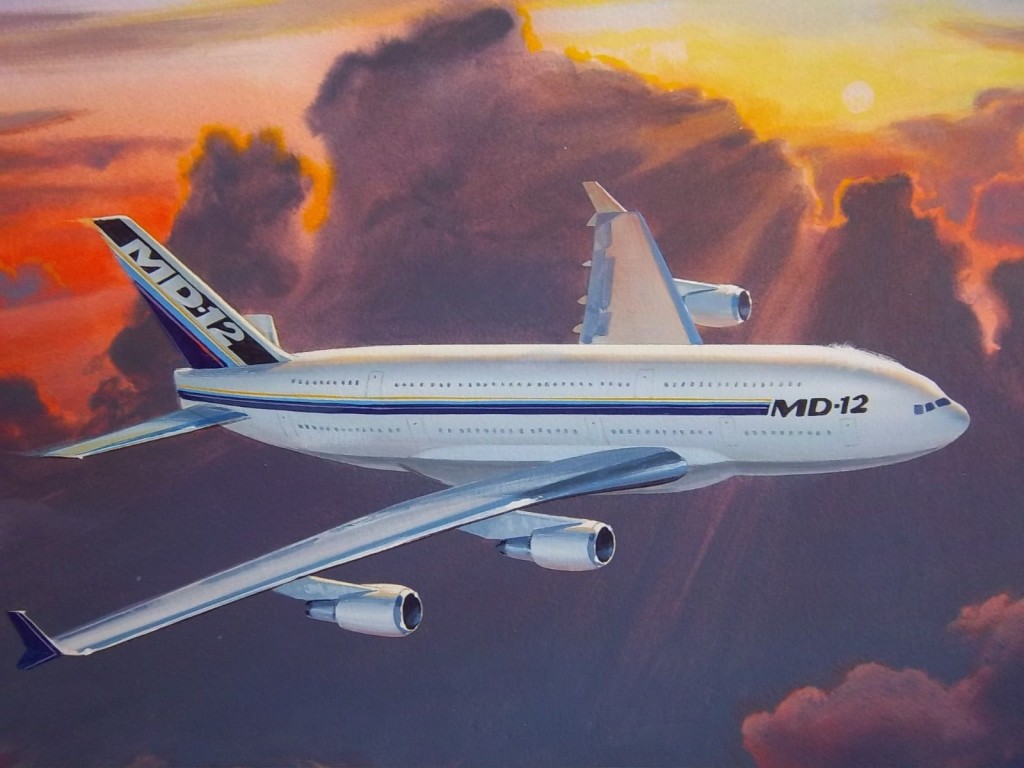Anybody know where I could get a copy of the CAD diagram (or similar) of the Space Launch System shown in the background of this image?
For APR Patrons, here’s what you now have available:
Documents: 2 General Electric reports on nuclear turbojets, *packed* with diagrams
Document: Mercury/Redstone booster recovery
Large diagram: 2 this time… “Long Tank Delta” space launch rocket and “Honest John” battlefield nuclear missile
CAD diagram: Convair “FISH,” 1958 configuration
If you’d like to access these and many others, or if you’d simply like to help the cause of recovering and making available forgotten aerospace ephemera such as this, please check out the APR Patreon page.
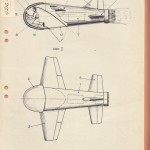
A blog reader provided this scan. It comes from the archive of the Imperial War Museum, and was all alone in its folder… what you see is all there is. It appears to show a rocket powered “rammer,” with a massive armored nose for slamming into enemy bombers. The pilot is provided with an easy-bailout ramp, presumably to be used after aiming his plane at a target but before impact (I would *not* want to be in at thing when the actual ramming occurs). Presumably dates to WWII. The style of drawing looks like a patent drawing. My guess is that it was a patent submitted by Just Some Schmoe during the war, and is not a serious concept by a reputable design firm, but I don’t know for sure. If anyone has firm data, please advise.
Found on ebay a while back was a translation of a WWII-era German report on the Dornier P 232/3 design. This was a proposed derivative of the Dornier Do 335 fighter… while the Do 335 had a piston engine in the nose and another in the tail, the P 232/3 replaced the tail engine with a turbojet. This would have chewed through the fuel in a hell of a hurry, but it also would have increased top speed. Mixed propulsion fighters like this enjoyed a brief burst of popularity for a short span of years immediately following WWII, but apart from some prototypes nothing really came of them.
The ebay sale helpfully provided some good scans of some diagrams.
The USS United States (CVA-58) was a supercarrier that was begun in 1948, but never finished. Even though the keel was laid, the actual layout of the final ship has always been pretty poorly defined in published sources. It would have been an angled-deck supercarrier of modern design, but with no island at all, just a flat deck. But diagrams of it have always been vague, unofficial or dubious.
Huzzah! The National Archives has a number of high-rez plans of the ship as designed in October 1947. Five diagrams of slightly differing study concepts are available; I’m not sure which – if any – most accurately depicts the ship as it was eventually to be defined.
CV-New Study Arrangement Plans
Here’s one of the diagrams… greatly reduced in size. See the National Archives page for the full-rez versions.
I have just uploaded 300 dpi-high-rez scans of two things to the APR Patreon “Extras” folder (2015-06 sub-folder):
1) An article from the May, 1956, issue of Popular Science, “Now They’re Planning A City In Space.” This article, illustrated with full-color paintings, describes the gigantic artificial gravity space station proposed by Darrell Romick of Goodyear Aircraft Company as part of the METEOR project. This space station is forward-thinking by today’s standards, and is challenged in scale only by the likes of the O’Neill space colonies.
2) A McDonnell-Douglas painting depicting a Trans Atmospheric Vehicle in orbit.
These items are available to all $4+ APR Patreon patrons, and were made possible by the support of APR patrons and customers. If you’d like to access these and many other extras, please check out the APR Patreon page.
The apparently original concept painting of the McDonnell-Douglas MD-12 showed up on eBay a few days back. The MD-12 was the last new aircraft that McD designed before being absorbed by Boeing; like the Boeing NLA and the Airbus A380, it was a big fat double decker designed to haul large numbers of passengers at once.
A Convair film about the NB-36H, a heavily modified B-36 bomber equipped with a nuclear reactor. The reactor was not hooked up to anything but instruments; all it did was sit there and give off radiation. Which was in fact the point of the exercise; the plane was an experiment in support of atomic powered aircraft, but the experiments were to see how crew, structure and instruments would stand up to the radiation environment produced by an airborne reactor.
